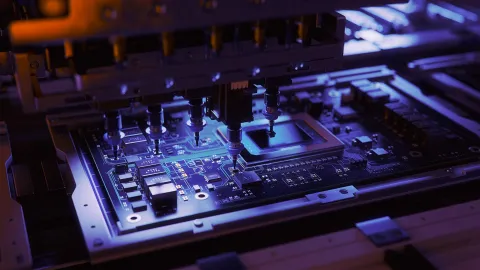Instant Payments - A catalyst for payments modernization

Electronic payment systems emerged more than 50 years ago. For most of that time, the systems matured and grew but did not fundamentally change in form or function.
That began to gradually change about 15 years ago as commercial and central banks in several countries began to recognize that the legacy, batch-based, and time-constrained systems that had served them well were ripe for disruption.
Thanks to advances in technology, especially processing speeds and network connectivity, the idea that payments could be initiated and settled in seconds, rather than hours or days, took hold.
Fast forward to today: There are now over 75 such systems in operation around the world, two in the U.S. alone, supporting use cases ranging from low-value consumer payments to enterprise treasury management.
Implementing instant payment systems can be a challenge. They operate on a different, more complex and data-rich messaging format than legacy systems such as ACH or cards. They run 24x7, even when banks are not typically open for business. And they must operate alongside legacy networks that remain relevant and continue to handle large volumes of payments.
It’s tempting for banks to view the addition of a payment scheme as just another system to run and another silo to manage, or to simply outsource the management of the new scheme without disrupting the existing infrastructure. That strategy can be expedient — but it ignores the reality that with challenges come opportunities.
Rather than viewing the implementation of instant payments purely as a burden, banks should be thinking about how adding the capabilities of these systems can create synergies that pay dividends across payments and other lines of business.
Implementing a new payment scheme can be an opportunity to establish a new platform built on a new, modern architecture, deployed in a cloud-based environment, and that serves as the basis for modernizing the payment stack across the enterprise. This is especially true as more systems, including both domestic and cross-border options, adopt ISO 20022 messaging frameworks.
Modern platforms do more than simply handle payments. They often offer low-code/no-code configurability, meaning that making changes no longer requires extensive development resources. They provide better data and data management, which can be used for a range of use cases, from optimized routing to liquidity management to risk management and training AI models.
Critically, modern integrated payment systems provide a migration path for legacy schemes and new payment types alike. Banks can manage their modernization process on their own schedule without disrupting the entire ecosystem. And when the payment systems and associated data are fully leveraged, they can offer new payment-related products, services, and revenue.
The pace of change in payments has accelerated. New technologies and methods used to emerge slowly, often with decades between major advancements. Today, we see new rails, new rules, and new regulations coming to market much more quickly, even continuously.
In most cases, these new rails need to run alongside older systems that remain relevant. Legacy platforms, however, despite having worked reliably for years, were not designed for the flexibility that is necessary today.
As a result, it is becoming harder for banks to keep up, especially if they maintain their own payments tech stack. This makes working with reliable and nimble technology partners, particularly those that offer modern, extensible systems, based on reliable multi-cloud and SaaS/PaaS solutions, more important than ever.
With the right strategy, partner, and technology in place, payments can become a powerful asset to drive the entire institution forward.



